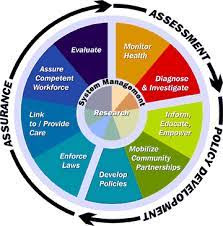5 Essential Factors to Consider When Buying Homeowners Insurance 2024
Understanding Homeowners Insurance
Homeowners insurance is a crucial safety net that protects your home and possessions from unexpected events. Whether it's a natural disaster, theft, or an accident, having insurance ensures that you’re not left bearing the full cost of repairs or replacements. Let's dive into the basics of homeowners insurance, its importance, and how it works.What is Homeowners Insurance?
Homeowners
insurance is a policy that provides financial protection against losses and
damages to your home and personal belongings. It covers various risks,
including fire, theft, vandalism, and certain natural disasters like hurricanes
and earthquakes. If your home is damaged or destroyed, the insurance company
helps cover the costs of repairs or rebuilding. It can also provide liability
coverage if someone gets injured on your property and you are held responsible.
Why is Homeowners Insurance Important?
1. Defense from Economic Loss:
Without assurance, the price of mending or
upgrading your home after a catastrophe can be irresistible. Homeowners
insurance helps cover these expenses, ensuring you don't face financial ruin.
2. Personal Belongings Coverage:
Your insurance policy doesn't just cover the
structure of your home. It also protects your personal belongings, such as
furniture, electronics, and clothing, against theft or damage.
3. Liability Coverage:
If
someone is injured on your property, homeowners insurance can help pay for
their medical bills and any legal expenses if they sue you.
4. Mortgage Requirement:
If you have a mortgage, your lender will
typically require you to have homeowners insurance. This defends their asset in
your household.
 |
| Homeowner Insurance |
What Does Homeowners Insurance Cover?
Homeowner
insurance generally covers four main areas:
1. Dwelling Coverage:
This
covers the structure of your home, including the walls, roof, and foundation,
against damage from events like fire, windstorms, and vandalism.
2. Personal Property Coverage:
This
protects your personal belongings inside the home. If your possessions are
stolen or damaged, the insurance company will help pay for their repair or
replacement.
3. Liability Coverage:
If
someone is injured on your property or you accidentally damage someone else's
property, this coverage helps pay for legal fees and medical expenses.
4. Additional Living Expenses:
If your
home becomes uninhabitable due to a covered event, this pays for temporary
housing and living expenses while your home is being repaired.
Types of Homeowners Insurance Policies
There
are diverse types of proprietors' insurance rules intended to encounter numerous
requirements:
1. HO-1:
This is a
basic policy that covers a limited number of risks, such as fire, theft, and
vandalism.
2. HO-2:
Also
known as a broad-form policy, it covers more risks than HO-1, including damage
from falling objects or the weight of ice and snow.
3. HO-3:
This is
the most common policy and provides coverage for most types of damage, except
those specifically excluded in the policy, such as floods or earthquakes.
4. HO-4:
This is
for renters and covers their personal belongings and liability but not the
structure of the building.
5. HO-5:
This
offers the most comprehensive coverage, including more protection for personal
property and fewer exclusions than HO-3.
6. HO-6:
Designed
for condominium owners, it covers personal belongings, liability, and the
interior structure of the unit.
7. HO-7:
This
policy is for mobile or manufactured homes and offers similar coverage to HO-3
but is tailored to the unique needs of these homes.
8. HO-8:
This is
for older homes and provides coverage similar to HO-1 but is designed to
account for the higher cost of rebuilding older homes.
How to Choose the Right Policy
Choosing
the right homeowner's insurance policy depends on several factors:
1. Assess Your Needs:
Consider
the value of your home and belongings and the risks you want to be covered
against. If you live in an area prone to natural disasters, you might need
additional coverage.
2. Compare Policies:
Different
insurance companies offer various policies with different coverage options and
prices. It's essential to compare policies to find the best one for your needs.
3. Understand the Exclusions:
Be aware of what is not covered by the policy.
You might need additional policies for specific risks like floods or
earthquakes.
4. Check the Deductibles:
This is
the amount you have to pay out of pocket before the insurance company covers
the rest. Higher deductibles usually mean lower premiums, but make sure you can
afford the deductible in case of a claim.
5. Review the Coverage Limits:
Make sure the policy limits are high enough
to cover the cost of rebuilding your home and replacing your belongings.
How to File a Claim
If
you want to file a right, trail these stages:
1. Document the Damage:
Take
pictures or videos of the damage and make a list of any items that were lost or
damaged.
2. Contact Your Insurance Company:
Notify
your insurer as soon as possible. Provide them with all the details of the
damage and any documentation you have.
3. Meet the Adjuster:
An adjuster from the insurance company will
visit your home to assess the damage and determine the payout.
4. Get Repair Estimates:
Obtain
estimates from contractors to repair or rebuild your home. Provide these to the
insurance company to support your claim.
5. Receive Your Payment:
Once the claim is approved, the insurance
company will issue a payment to cover the repairs or replacement costs.
Conclusion:
Homeowners
insurance is vital for defending your home and individual possessions from
unforeseen proceedings. By understanding the different types of policies and
coverage options, you can choose the right insurance to meet your needs and
provide peace of mind. Whether you're a new homeowner or looking to review your
current policy, knowing how homeowners insurance works can help you make
informed decisions and ensure you're adequately protected.


